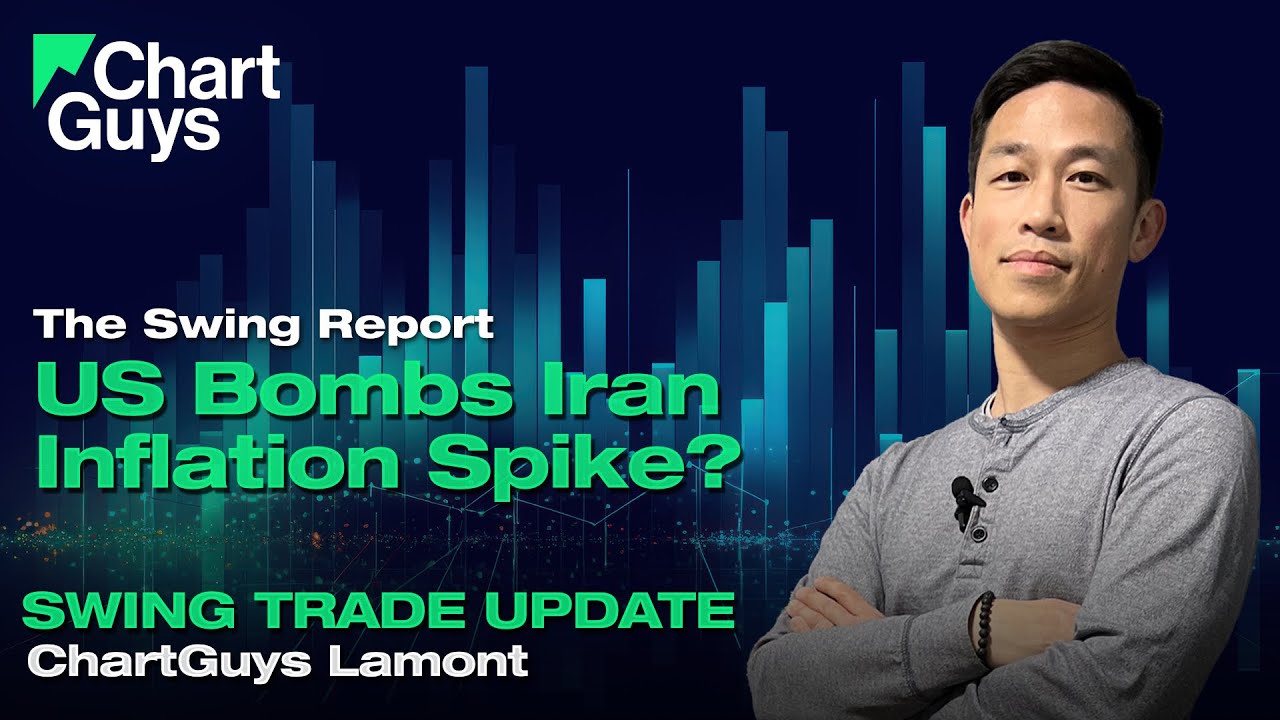
Simple Trading Strategy: How to Manage Market Uncertainty Like a Pro
Introduction
If you’re a trading enthusiast on YouTube, chances are you’ve heard of TheChartGuys and their seasoned analyst, Lamont. Their straightforward education and chart analysis have made them a go-to resource for traders worldwide. In a recent video, Lamont tackled a challenge that rattles even experienced traders: navigating markets when unexpected news hits and uncertainty skyrockets.
Many beginners find themselves paralyzed or making costly mistakes during these high-volatility events. This article will break down the common pitfall of overreacting to surprise market news, explain why it happens, and—more importantly—teach you a simple trading strategy to help you trade through market uncertainty with confidence. Let’s dive in.
The Problem: Overreacting to Surprise News
Markets are unpredictable, and sometimes volatility arrives with headlines no one expected. News like “US bombing I-ran just as key daily breakout points were being tested during Friday’s session” can send shockwaves through the markets.
At moments like this, many beginners ask themselves, “Is this the end for buyers, or will markets continue to brush off fear?” The natural reaction is to panic: either to dump positions hastily or rush into new ones without a strategy.
- Knee-jerk exits: Selling good trades too quickly on headline fear.
- Chasing volatility: Jumping into positions without analysis, hoping to catch a move.
- Analysis paralysis: Freezing up, unable to make a decision as the market moves fast.
Lamont points out that these emotional reactions rarely end well and are one of the most common and costly mistakes for beginner traders.
Why This Happens: The Psychology of Market Fear
Why do so many traders, both new and seasoned, make these mistakes during surprise news events?
It all comes down to fear and uncertainty. Unpredictable news triggers our fight-or-flight responses, making rational analysis difficult. Our minds become clouded by the sense of urgency and risk, leading us to overestimate the impact of a single event.
Humans naturally want to “do something” to regain control—whether that means selling out or jumping into a new trade. But acting without a plan is like driving in a fog; we see danger everywhere and overcorrect.
“In this video, we’ll cover all of that and more. So let’s get into it.”
This quote from Lamont reminds us that structure and preparation are more powerful than panic.
The Simplified Solution: A Simple Trading Strategy for Uncertain Times
Here’s what Lamont and TheChartGuys recommend when markets are rocked by unexpected headlines:
- Pause and Assess:
When surprise news strikes, take a moment to breathe and observe. Don’t react immediately. Check your charts and weigh the actual impact of the news compared to the market trend and key technical levels. - Focus on Structure Over Stories:
Let the price action be your guide, not the headlines. Are the key support/resistance levels holding? Is the breakout or breakdown confirmed? - Plan Your Trade, Trade Your Plan:
Stick to your predefined entry and exit points. Use stop losses and targets that were set before the chaos—don’t move them without clear, reasoned justification. - Accept What You Can’t Control:
Understand that markets will always have elements of surprise. The best traders focus on what they can control: their process and their risk management. - Journal and Learn:
After the volatility passes, review your trades and emotions. Did you follow your plan or did you react on impulse? Refine your process for next time.
Metaphor: Think of your trading plan as the anchor of a ship. When a sudden storm hits (surprise news), you may sway, but you won’t be swept away if your anchor is set firmly. Stick to your plan—don’t pull up anchor just because the weather changed.
Example Scenario: How to Respond, Not React
Imagine you’re in a swing trade, and a major news story breaks just as your stock is testing a crucial resistance level. The market gaps down at the open, but your analysis shows that support hasn’t broken. You feel the urge to sell immediately.
- Instead, you pause, revisit the chart, and see that your stop-loss hasn’t been hit.
- You remind yourself that volatility often leads to overreactions and that measured trading wins over panic every time.
- You hold your position as planned, and the market eventually recovers, proving your analysis correct.
By responding—rather than reacting—you avoided a loss and gained valuable confidence.
Beginner Tip or Golden Rule
Golden Rule: “Don’t let headlines trade your account. Let your plan do the work.”
Whenever news shakes the market, remember: steps, not stress. Follow your strategy. The only thing you should ever chase is a sound process, not a fleeting headline.
Soft CTA: Discover More with Traderfriends
Want more support as you build your trading skills? Traderfriends offers a helpful community, hands-on beginner education, and strategies like the Heikin Ketsui approach to keep you steady—even when volatility surges. Take the next step on your trading journey with practical resources and a supportive network.
Every confident trader started out as a beginner—like you. Let Traderfriends help you along the way.


